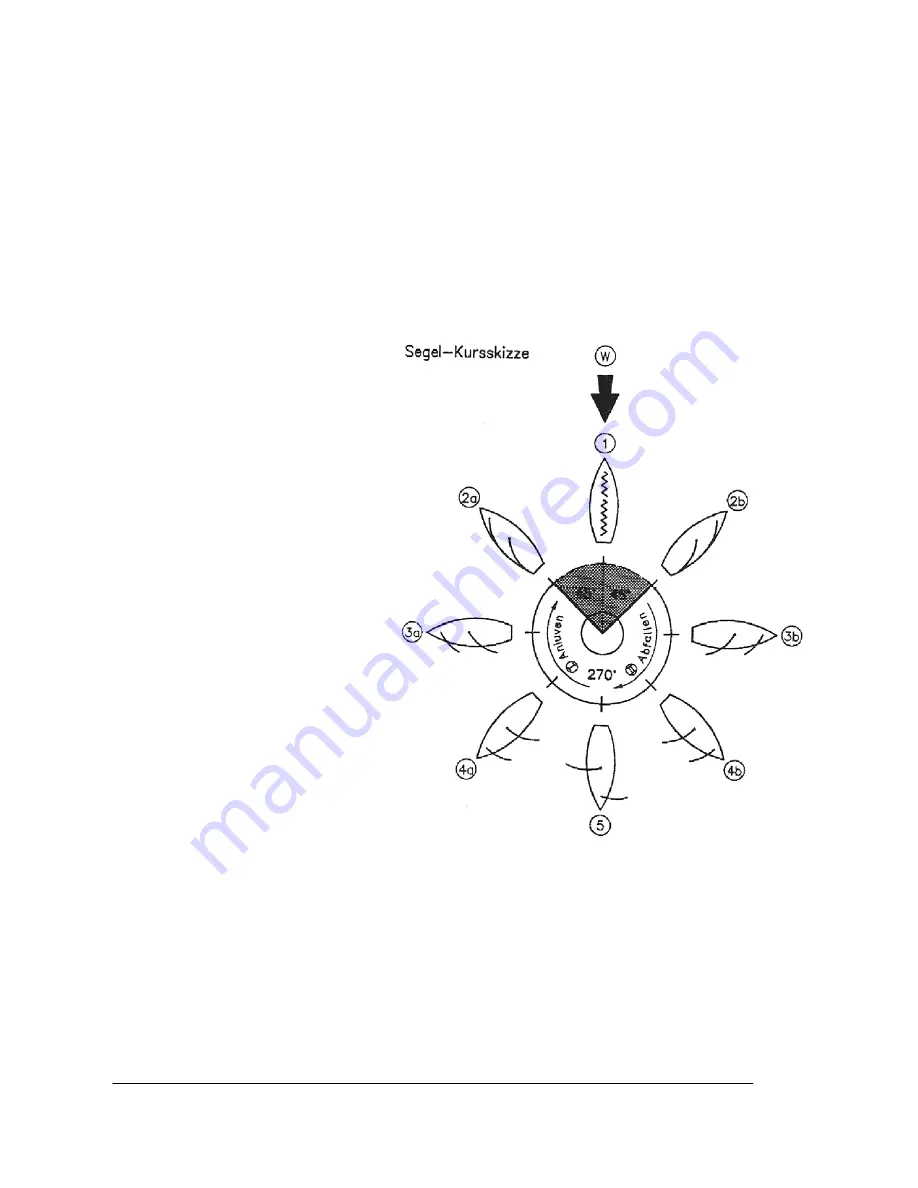
GRAUPNER GmbH & Co. KG D-73230 KIRCHHEIM/TECK GERMANY
No liability for printing errors. Technical modifications reserved!
03/2011
12
Place your finished, fully equipped model in the water, so that you can install the ballast weight and adjust
the boat’s trim; scrap steel strip from your local metal factor is a good form of ballast. Place the ballast
weights as low down in the hull as possible. Once the model is floating correctly, fix the ballast in place
really securely; it must be impossible for it to shift when the boat is in the water.
TIP:
it is best to use Velcro
tape for this, so that you can adjust the boat’s trim at any time, or remove the ballast to make the model
easier to transport.
Sailing
Sailing a model yacht is not difficult once you are familiar with the interaction between the wind direction, the
boat’s heading and the appropriate sail settings. Before you sail the model for the first time, we recommend that
you read all you can on the theory of sailing, e.g. by reading one of the many books on the subject. The
following section just provides a short, basic introduction to the subject.
The various points of sailing (see sketch; special terms are printed in Italics)
A sailing boat can never sail directly into
wind (black arrow (W)). In the 90° sector
(dark grey area) the sails will always flutter
(
shiver
), and generate no forward thrust.
Only when the boat bears away to about
45° off the wind direction will it start to pick
up speed with the sails close-hauled
(transition from dark grey area to light grey
area (2a) to (2b)). This course is termed
luffing
. A sailing boat can only make
headway into the wind on this course and
with the sails close-hauled; the procedure
is known as
tacking
, and involves sailing in
a zig-zag pattern: for a while on the
port
tack
(mainsail on the left-hand (port) side
of the boat (2a)), then, after going about
(the boat’s bow turns through the wind,
from position (2a) via (1) to (2b)), for a
while on the
starboard tack
(mainsail on
the right-hand (starboard) side of the boat
(2b)), etc. Fast, efficient tacking with a
sailing boat demands a good eye and
considerable manual skill, and ranks as the
true art of sailing.
The other courses are not so demanding. If
the wind is blowing from the side, the sails
are slackened (
paid out
) just to the point
where they no longer shiver, i.e. around
30° to 45° relative to the boat’s longitudinal
axis. This course is known as
sailing with
wind abeam
((3a) wind abeam on the port
bow / (3b) wind abeam on the starboard
bow).
If the boat bears away even further (
bearing away
: the boat turns away from the wind, i.e. the stern turns
increasingly in the direction of the wind (II) /
luffing
: the boat’s bow turns increasingly towards the direction of
the wind (I), ending up on a course
with free wind
, where the sails are paid out to about 60° to the boat’s
centreline (4a / 4b). The boat only attains its maximum speed on these two headings.
If the boat is sailing directly away from the wind (downwind), we speak of
running before the wind
. On this
course the sails should be paid out as far as possible (approx. 90° to the boat’s centreline). Differential
pressure conditions on the sails cause the jib to turn to the opposite side to the mainsail by itself, but this
situation can also be generated deliberately by small rudder / course corrections. If the wind is or becomes too
strong, the bow of a sailing boat can very easily be pushed under the water.
If the boat is sailing with free wind, is brought into a position before the wind using the rudder (bearing away),
Segel-Kursskizze - Sketch of the points of sailing
Anlufen - Luffing
Abfallen - Bearing away































